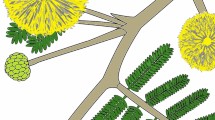Abstract
Flavonoids are abundant in plants as secondary metabolites where they have antioxidant activities. The diverse and non-specific inhibition of several enzymes, including avian myeloblastosis virus reverse transcriptase (RT), human immunodeficiency virus (HIV) RT, murine leukemia virus RT, HIV-1 protease, trypsin and elastase, were tested for by observing the effects of several flavonoid compounds. Some of the flavonoids were reconfirmed as antiretroviral agents as previously shown by others. Flavonoids belonging to the flavonol or flavone group simultaneously inhibited reverse transcriptases and proteases. On the contrary, flavonoids belonging to the flavanol, isoflavone or flavanone group were less likely to inhibit reverse transcriptase or protease. Vegetables and fruits rich in flavonoids have become integral and even necessary in the animal diet, suggesting that flavonoids may have developed to play beneficiary roles for not only the plants themselves but also the predator animals.
Similar content being viewed by others
Abbreviations
- AMV:
-
avian myeloblastosis virus
- ATA:
-
aurintricarboxylic acid
- DTT:
-
dithiothreitol
- dTTP:
-
deoxythymidine triphosphate
- EDTA:
-
ethylenediaminetetraacetic acid
- FRET:
-
fluorescence resonance energy transfer
- HIV:
-
human immunodeficiency virus
- IC50 :
-
half maximal inhibitory concentration
- MuLV:
-
murine leukemia virus
- RT:
-
reverse transcriptase
References
Ahn EM, Han JT, Kwon BM, Kim SH, and Baek NI (2008) Anti-cancer activity of flavonoids from Aceriphyllum rossii. J Korean Soc Appl Biol Chem 51, 309–315.
Ahn MJ, Yoon KD, Min SY, Lee JS, Kim JH, Kim TG, Kim SH, Kim NG, Huh H, and Kim JW (2004) Inhibition of HIV-1 reverse transcriptase and protease by phlorotannins from the brown alga Ecklonia cava. Biol Pharm Bull 27, 544–547.
Baltimore D (1970) Viral RNA dependent DNA polymerase: RNA dependent DNA polymerase in virions of RNA tumour viruses. Nature 226, 1209–1211.
Brinkworth RI, Martin JS, and David PF (1992) Flavones are inhibitors of HIV-1 proteinase. Biochem Biophys Res Commun 188, 631–637.
Coffin JM (1996) Retroviridae and their replication. In Virology, Fields BN et al. (eds.) pp. 1767–1848. Raven Press, NY, U.S.A.
Häkkinen SH, Kärenlampi SO, Heinonen IM, Mykkänen HM, and Törrönen AR (1999) Content of the flavonols quercetin, myricetin, and kaempferol in 25 edible berries. J Agric Food Chem 47, 2274–2279.
Kaul TN, Elliott Middleton Jr MD, and Pearay LO (1985) Antiviral effect of flavonoids on human viruses. J Med Virol 15, 71–79.
Kohlstaedt LA, Wang J, Friedman JM, Rice PA, and Steitz TA (1992) Crystal structure at 3.5 A resolution of HIV-1 reverse transcriptase complexed with an inhibitor. Science 256, 1783–1790.
Lin YM, Herbert A, Michael TF, Yeah-Huei SP, Eugenia MG, Thitima P, John MP, Raymond FS, Stephen HH, and Fa-Ching C (1997) In Vitro Anti-HIV activity of biflavonoids isolated from Rhus succedanea and Garcinia multiflora. J Nat Prod 60, 884–888.
Luciw PA and Leung NJ (1992) Mechanisms of retrovirus replication. In The Retroviridae: Levy JA (ed.) pp. 159–298. Plenum Press, NY, U.S.A.
Ma SC, But PP, Ooi VE, He YH, Lee SH, Lee SF, and Lin RC (2001) Antiviral amentoflavone from Selaginella sinensis. Biol Pharm Bull 24, 311–312.
Moore PS and Pizza C (1992) Observations on the inhibition of HIV-1 reverse transcriptase by catechins. Biochem J 288, 717–719.
Nijveldt RJ, van Nood E, van Hoorn DE, Boelens PG, van Norren K, and van Leeuwen PA (2001) Flavonoids: a review of probable mechanisms of action and potential applications. Am J Clin Nutr 74, 418–425.
Pan X, Tan N, Zeng G, Zhang Y, and Jia R (2005) Amentoflavone and its derivatives as novel natural inhibitors of human cathepsin B. Bioorg Med Chem 13, 5819–5825.
Pietta PG (2000) Flavonoids as antioxidants. J Nat Prod 63, 1035–1042.
Sarafianos SG, Kortz U, Pope MT, and Modak MJ (1996) Mechanism of polyoxometalate-mediated inactivation of DNA polymerases: an analysis with HIV-1 reverse transcriptase indicates specificity for the DNA-binding cleft. Biochem J 319, 619–626.
Seelmeier SH, Schmidt VT, and von der Helm K (1988) Human immunodeficiency virus has an aspartic-type protease that can be inhibited by pepstatin A. Proc Natl Acad Sci 85, 6612–6616.
Song MC, Yang HJ, Kim DK, Jeong TS, Kwon BM, Kim JP, Park SK, and Baek NI (2008) Bioactive flavonoids from Trapa pseudoincisa. J Korean Soc Appl Biol Chem 51, 334–337.
Spedding G, Ratty A, and Middleton E Jr (1989) Inhibition of reverse transcriptase by flavonoids. Antivir Res 12, 99–110.
Spence RA, Kati WM, Anderson KS, and Johnson KA (1995) Mechanism of inhibition of HIV-1 reverse transcriptase by nonnucleoside inhibitors. Science 267, 988–993.
St. Clair MH, Martin JL, Tudor-Williams G, Bach MC, Vavro CL, King DM, Kellam P, Kemp SD, and Larder BA (1991) Resistance to ddI and sensitivity to AZT induced by a mutation in HIV-1 reverse transcriptase. Science 253, 1557–1559.
Temin HM and Mizutani S (1970) Viral RNA dependent DNA polymerase: RNA dependent DNA polymerase in virions of Rous sarcoma virus. Nature 226, 1211–1213.
Tanese N and Goff SP (1988) Domain structure of the Moloney murine leukemia virus reverse transcriptase: mutational analysis and separate expression of the DNA polymerase and RNase H activities. Proc Natl Acad Sci 85, 1777–1781.
Williamson MP, McCormick TG, Nance CL, and Shearer WT (2006) Epigallocatechin gallate, the main polyphenol in green tea, binds to the T-cell receptor, CD4: potential for HIV-1 therapy. J Allergy Clin Immunol 118, 1369–1374.
Yu YB (2004) The Extracts of Solanum nigrum L. for inhibitory effects on HIV-1 and its essential enzymes. Korean J Orient Med 10, 119–126.
Author information
Authors and Affiliations
Corresponding author
Rights and permissions
About this article
Cite this article
Ko, YJ., Oh, HJ., Ahn, HM. et al. Flavonoids as potential inhibitors of retroviral enzymes. J. Korean Soc. Appl. Biol. Chem. 52, 321–326 (2009). https://doi.org/10.3839/jksabc.2009.057
Received:
Accepted:
Issue Date:
DOI: https://doi.org/10.3839/jksabc.2009.057




